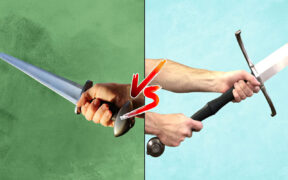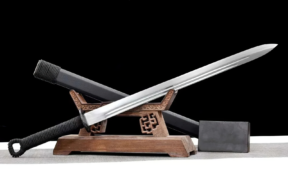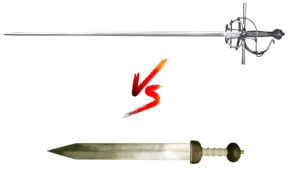25 Most Popular One-Handed Swords Throughout History
NO AI USED This Article has been written and edited by our team with no help of the AI
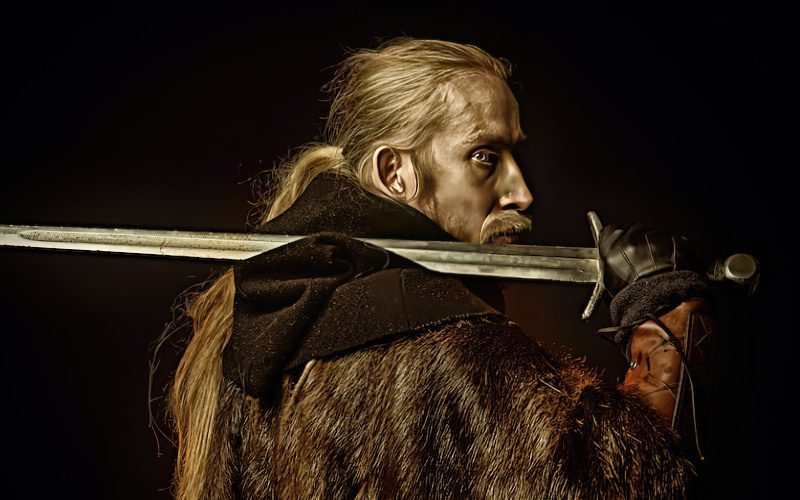
One-handed swords have a short grip, designed for single-hand use, allowing it to be paired with a shield or another weapon. Across various cultures, different versions of this versatile weapon were developed and evolved to serve both offensive and defensive purposes.
Let’s explore the types of one-handed swords used throughout the ancient, medieval, and late modern periods, highlighting their regional, cultural, and technological variations.
Ancient Period (3000 BCE to 500 CE)
The Ancient Period saw the rise of early civilizations like Egypt, Greece, and Rome, the Iron Age, as well as the fall of the Roman Empire. Early swords made from copper and bronze were prone to damage, but the invention of iron brought stronger, more durable weapons.
1. Khopesh (Egypt)
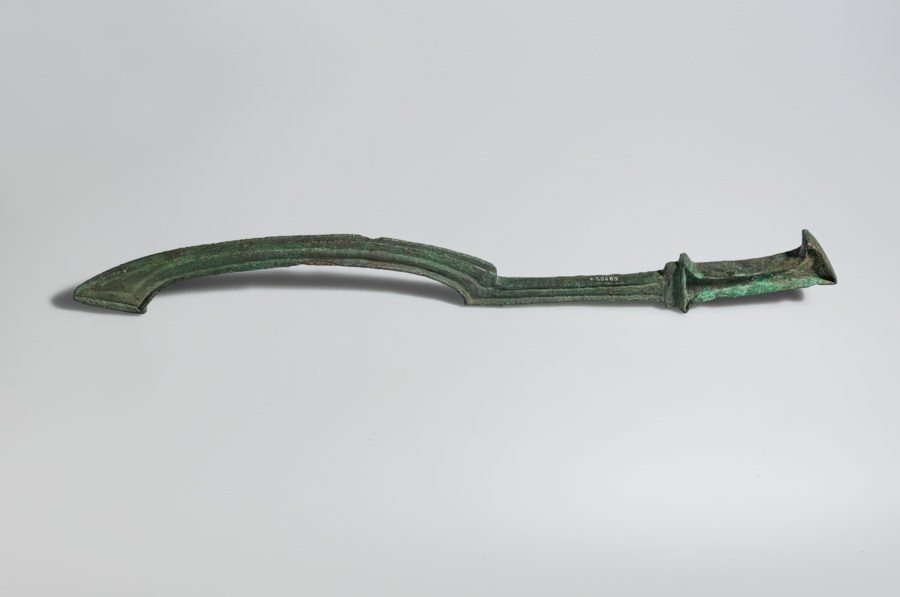
The term “khopesh,” meaning “foreleg of an animal,” refers to one of Ancient Egypt’s most influential weapons that is sickle-shaped. It has a hooked blade sharpened on the outer curve, ideal for hacking and pulling down shields in close combat.
2. Xiphos (Greece)
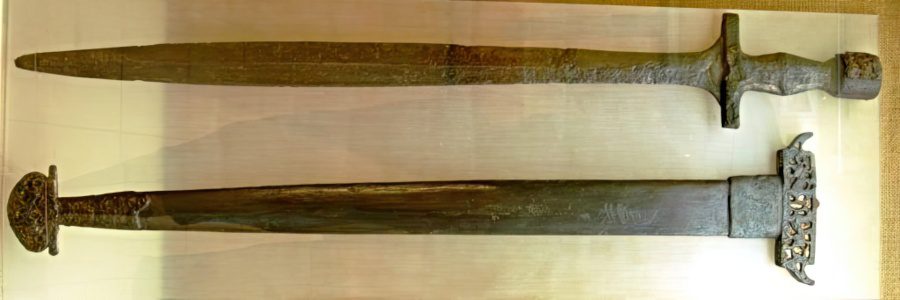
The leaf-shaped, double-edged xiphos served as a secondary weapon for Greek hoplites, complementing their spears during close combat. Military historian Mike Loades describes the xiphos as a weight-forward weapon, effective for both hacking and thrusting.
The xiphos became the archetypal sword of Classical and Hellenistic Greece.
3. Kopis (Greece)
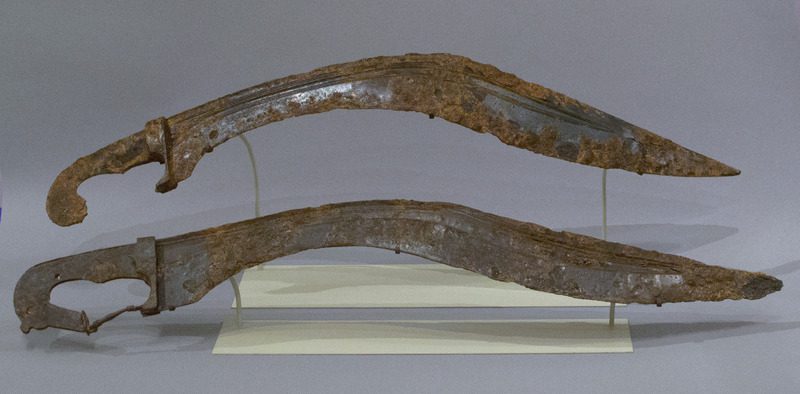
Also known as the machaira, the kopis had a recurved or hooked blade sharpened on the inner curve, allowing powerful, axe-like strikes while retaining the reach advantage of a sword. Due to its effectiveness in delivering cutting blows, it was particularly favored by Greek cavalry.
4. Falcata (Iberia)
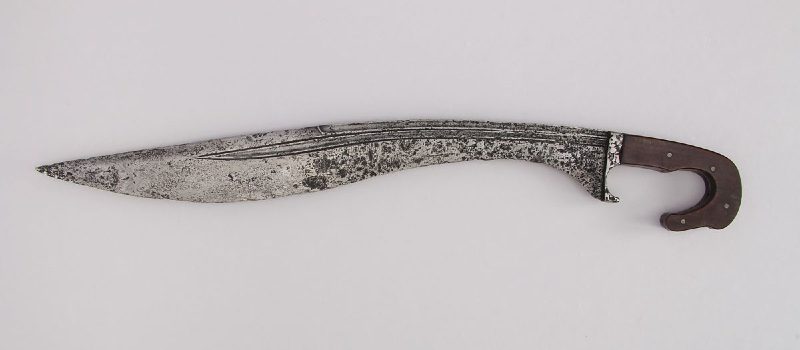
Believed to be developed by the Iberians as a local adaptation of the Greek kopis, the falcata shares similarities but is distinguished by its double-edged blade for about half its length. The falcata was used by Carthaginian armies during the Punic Wars against Rome.
5. Gladius (Rome)

The gladius is the renowned double-edged short sword of Roman legionaries. Although it evolved over the centuries from slightly waisted blades to parallel-edged versions, all were designed for thrusting and cutting.
Military historian Richard Gabriel states, “It killed more soldiers than any other weapon in history until the invention of the gun.”
6. Spatha (Rome)
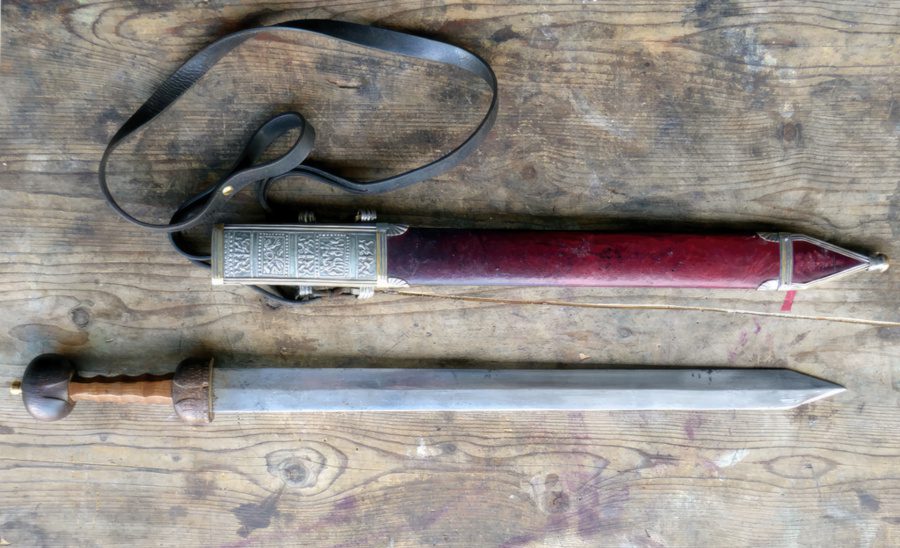
The spatha was a long, straight sword used by Roman cavalry. Military archaeologist M.C. Bishop noted that the Roman cavalry employed the spatha along with spears and javelins to chase and cut down fleeing enemies. The spatha later influenced medieval European swords, evolving into the arming sword with a crossguard.
Medieval Period (500 CE to 1400 CE)
The Middle Ages spans from the fall of the Roman Empire to the beginning of the Renaissance. With the rise of kingdoms, establishment of feudalism, and spread of Christianity, swords became a symbol of the military elite and nobility, reflecting their status and wealth.
1. Viking Sword
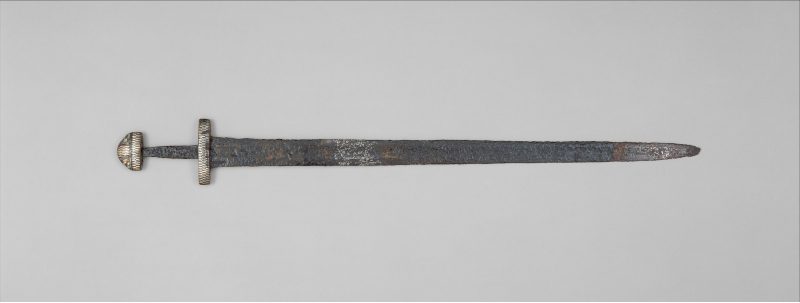
Evolved from the spatha, the Viking sword was a single-handed weapon used throughout the Viking Age (9th to 11th centuries) and often paired with a shield. Hacking blows were a common Viking fighting technique, so they likely used their swords as slashing weapons.
2. Arming Sword
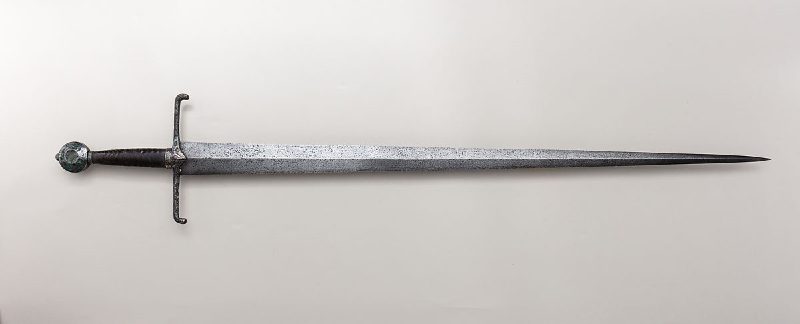
Also called the knightly sword, the one-handed arming sword had a cruciform guard and was typically paired with a buckler. It was commonly used during the Crusades of the 12th and 13th centuries.
Early versions had broad blades for slashing against mail armor while later variants adapted to armor advancements, featuring pointed tips for thrusting through plate armor.
3. Falchion
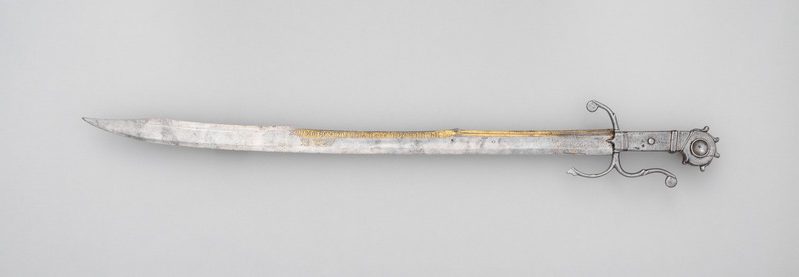
The falchion featured two distinct blades: a heavy, unbalanced machete-like cleaver for thrusting or a clip point blade for efficient cutting and thrusting. Knights and light troops, such as archers and spearmen, used the falchion on the battlefield.
4. Lange Messer (Germany)

Designed for slashing, the lange messer (meaning long knife) was a one-handed sword with a slightly curved blade, powerful enough to sever a hand from the arm with a single blow. Similar to modern saber fencing, it is typically wielded in one hand with the other hand behind one’s back.
Renaissance Period (1400 to 1700)
The Renaissance was a period bridging the Middle Ages and modern era. During this time, swords were common not only with the military but also among civilians, with duels serving as a preferred way to honorably settle disputes.
1. Katzbalger (Germany)
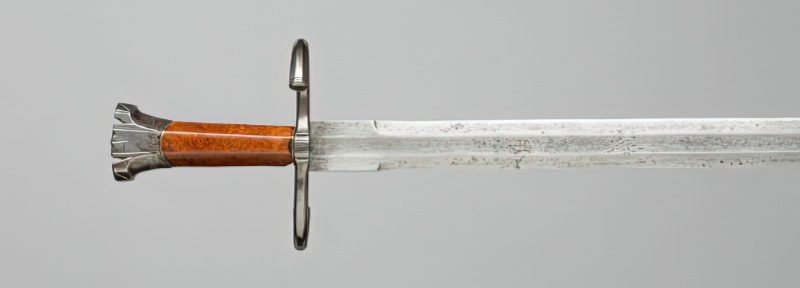
Most recognized for its figure of 8- or S-shaped guard, the katzbalger was the short sword of the German mercenary fighters known as Landsknechts. With a broad, double-edged blade, it was wielded by archers, crossbowmen, and pikemen to slash enemies in close combat.
2. Rapier
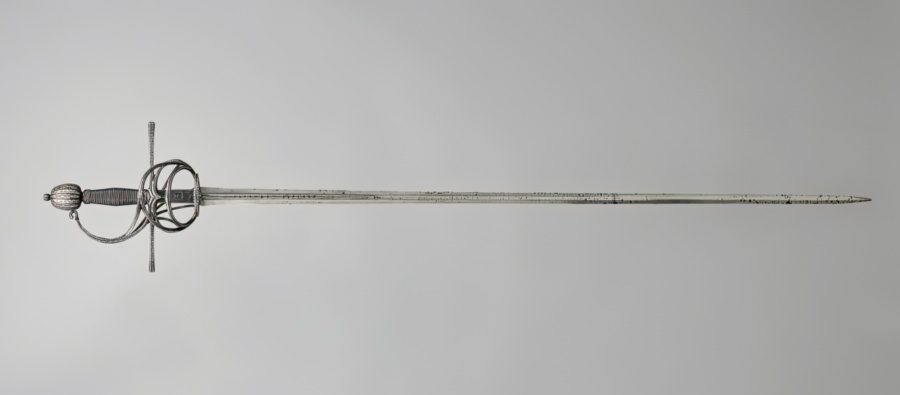
Rapiers are one-handed thrusting swords with a narrow blade and sharp tip, originally used for self-defense in civilian duels. Over time, they became associated with fashion, court life, and dueling.
Various hilt designs such as cup-shaped or swept-hilt were available. Early fencers often paired them with a parrying dagger, and some also used a buckler or cloak for defense.
3. Highland Basket-Hilted Broadsword (Scotland)

Also called a claymore, the Scottish basket-hilted broadsword was developed due to the preference for light weaponry and minimal armor while also protecting the swordsman’s hand. As a single-handed sword, it also allowed the use of a Scottish dirk or dagger in combination with a targe or shield.
4. Mortuary Sword (England)
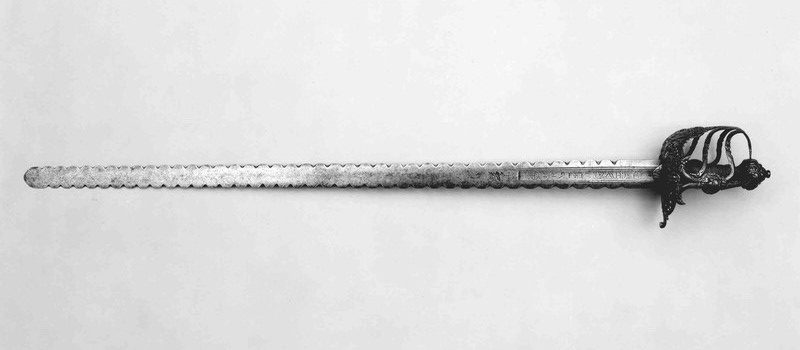
Many cavalrymen during the English Civil War used the mortuary sword, named after its resemblance to King Charles I’s death mask. It generally had straight single- or double-edged blades, a half-basket hilt resembling the human rib cage, and a grotesque mask.
5. Schiavona (Italy)

Another basket-hilted sword is the Italian schiavona, meaning Slavonic, a reference to the Dalmatian troops who used them in the service of the Venetian Republic. The Venetian broadsword’s distinctive basket hilt almost always features a pommel resembling a cat’s head.
6. Smallsword
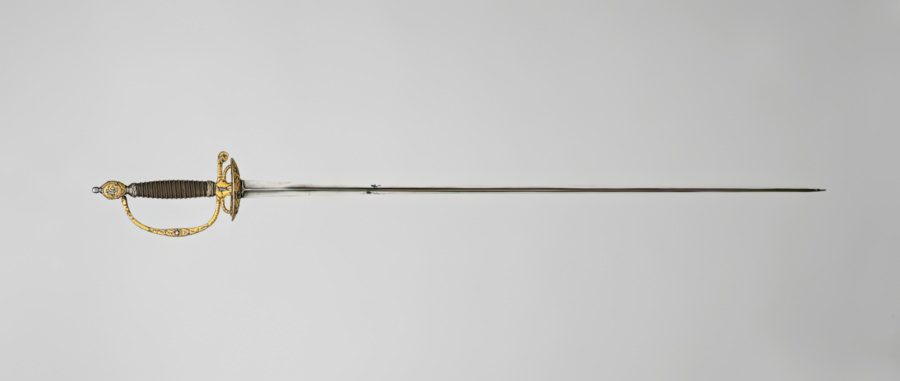
Evolved from the longer rapier, the one-handed smallsword was a dueling sword and civilian weapon designed for thrusting. Most recognized for its small cup and knuckle guard, it was used in Western Europe toward the end of the 17th century and doubled as a status symbol.
7. Talwar (India)
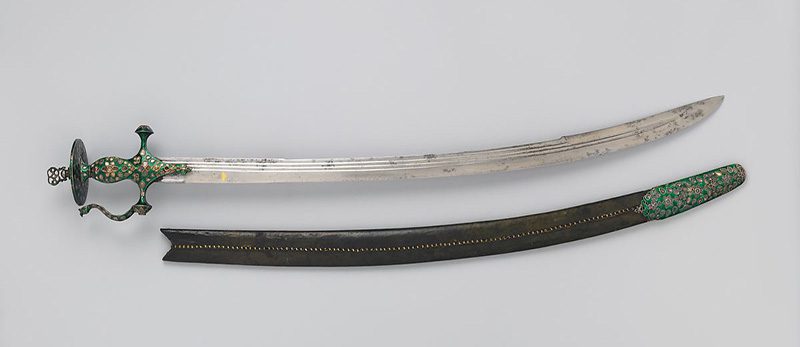
The talwar or tulwar is a curved sword introduced to the Indian subcontinent following the Muslim conquests. Widely used during the Mughal Empire by cavalry, it was known for powerful slashes capable of splitting helmets. It remained in use even after the British East India Company expanded its control over India in the 18th and 19th centuries.
8. Kilij (Ottoman)
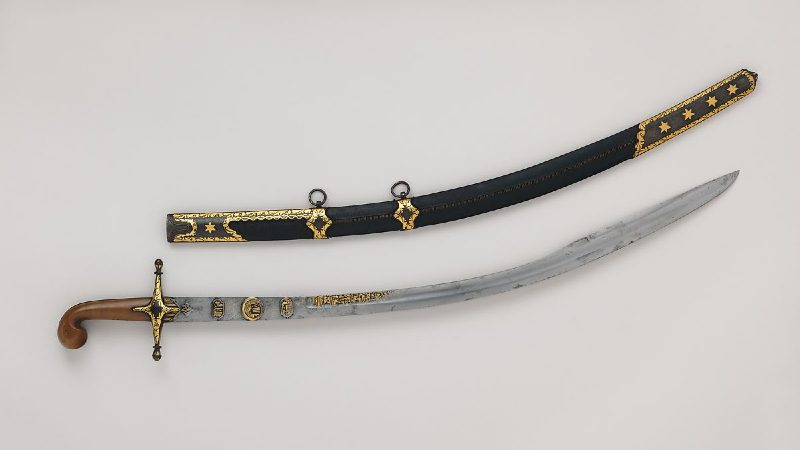
The kilij was the iconic Ottoman sword used by cavalry across Eastern Europe, the Middle East, and North Africa until the 19th century. This saber is distinguished by its pistol grip and a curved blade featuring a flared tip known as a yelman or false edge to enhance its cutting ability.
9. Shamshir (Persia)
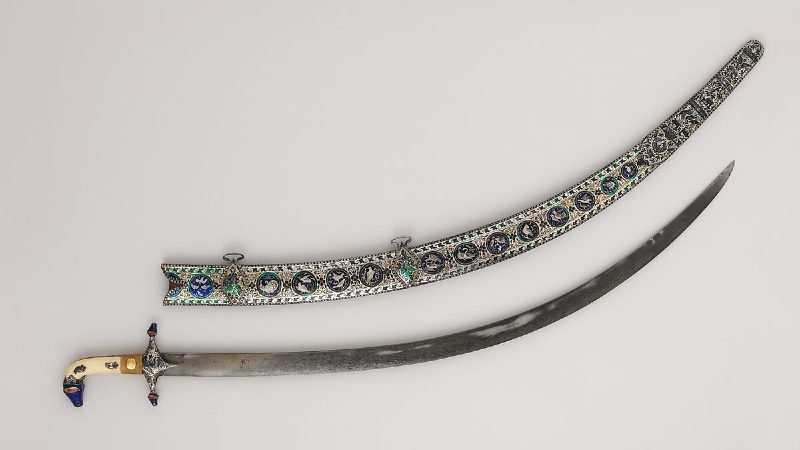
The Persian shamshir, with its deeply curved, tapering blade, became a popular weapon in the Middle East and India during the 16th and 17th centuries. This effective slashing weapon for both cavalry and infantry also allowed one to thrust the tip through an enemy.
10. Kastane (Sri Lanka)

The kastane, Sri Lanka’s national sword, is closely linked to the Sinhalese kingdom of Kandy. It has a distinctive hilt shaped like a lion’s head (simha) to symbolize the kingdom’s emblem. Besides being used in combat by Kandyan warriors or in ceremonies, the king also gifted it to chieftains and noblemen as symbols of rank and office.
11. Keris / Kris (Indonesia)
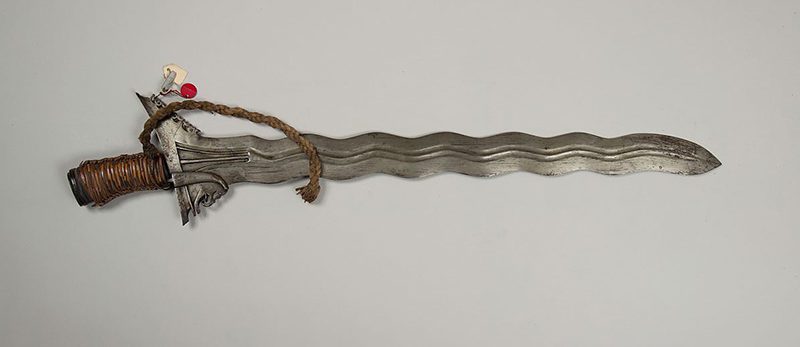
Originating from Java, Indonesia, the straight or wavy, double-edged keris is believed to hold spiritual power and shares cultural significance with Thailand, Brunei, Malaysia, and the Philippines. Designed for thrusting, it was traditionally worn by high-status individuals and used for executing criminals.
Late Modern Period (1700 to 1945)
The late modern period saw a series of revolutions—both political and industrial—that transformed warfare. The invention of handheld firearms made the sword obsolete, though in Western armies, the sword survived the longest as a combat weapon in the cavalry.
1. Hanger
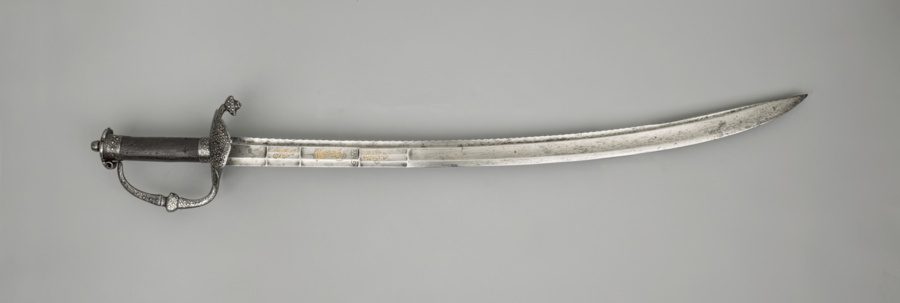
Often called a hunting sword, the hanger is a short sword with straight or curved blades. Originally part of formal hunting attire, it later became a standard military weapon in several armies during the 18th century. Hangers were more practical in difficult terrain than longer swords.
2. Shashka
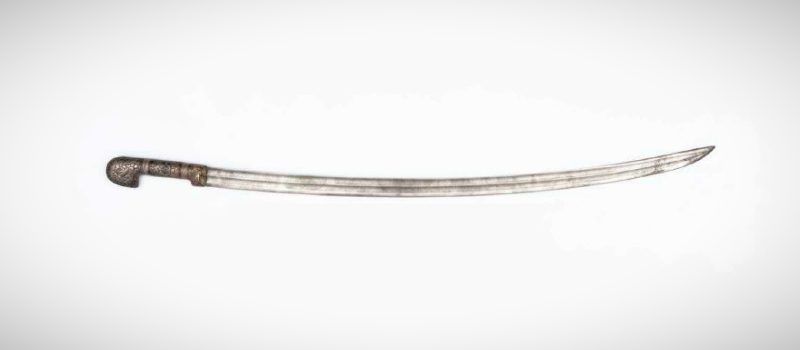
The shashka, a traditional sword of the Cossacks, Russian, and Ukrainian peoples has a saber-like blade and one-handed grip primarily used for slashing on horseback. Complemented by the shorter kindjal when on foot, saber charges using shashkas were recorded as late as World War I.
3. Kukri (Nepal)
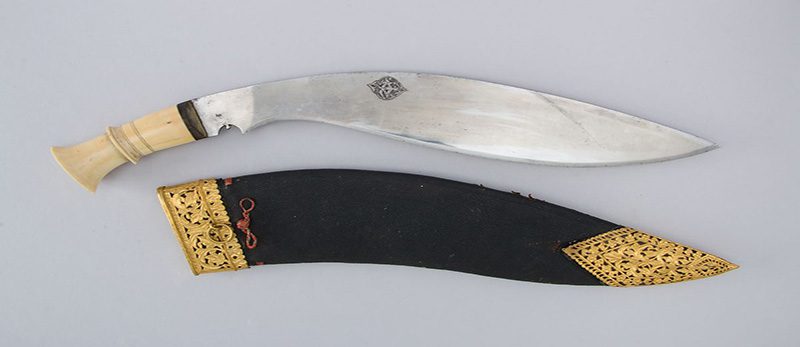
The traditional Nepalese kukri is associated with Nepalese Gurkha warriors who wielded it in World War II. Due to its short, forward-curving blade that provides exceptional chopping and slashing abilities, it is effective for combat and clearing dense jungle. It is allegedly capable of disemboweling a horse or severing blows with a single blow.
4. Flyssa (North Africa)

The flyssa is a distinctive sword of the Kabyles from Algeria and Morocco with a straight, single-edged blade with an elongated point, guardless hilt, and stylized animal head pommel. Originally designed to pierce chainmail armor, acquiring a flyssa was a rite of passage for young Kabyle men, and it remained in use in parts of Africa until the 19th century.
